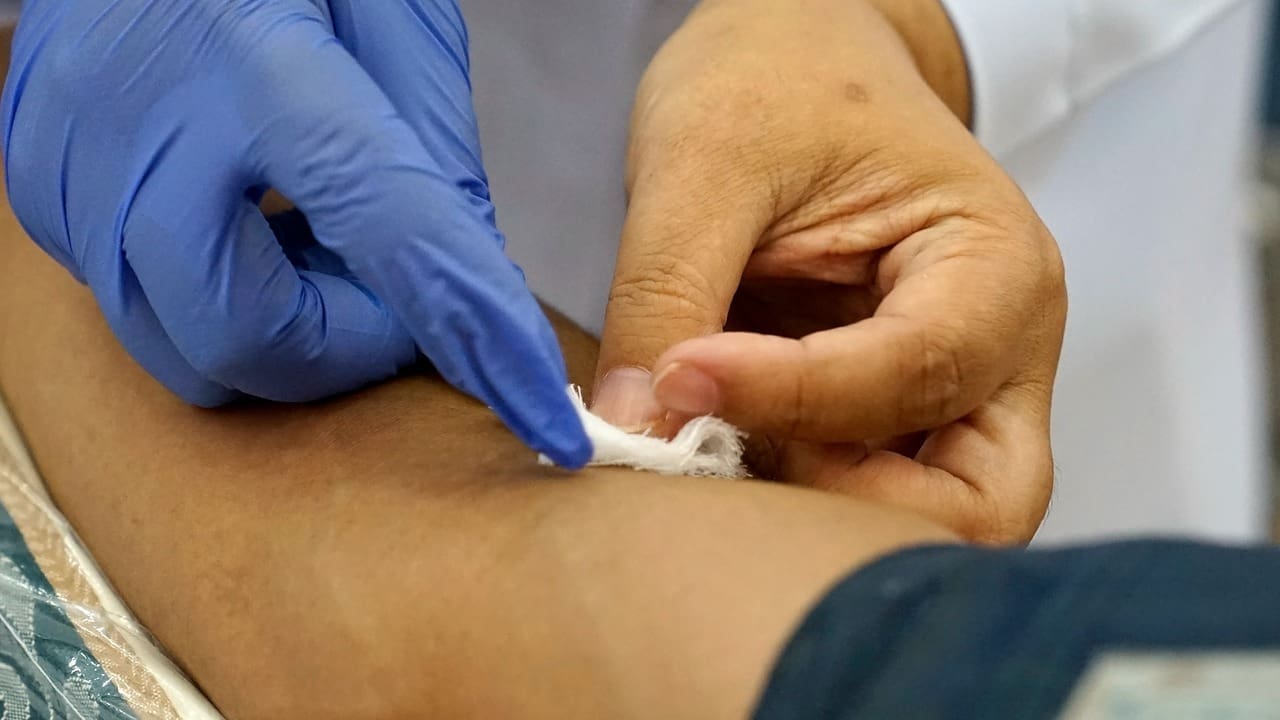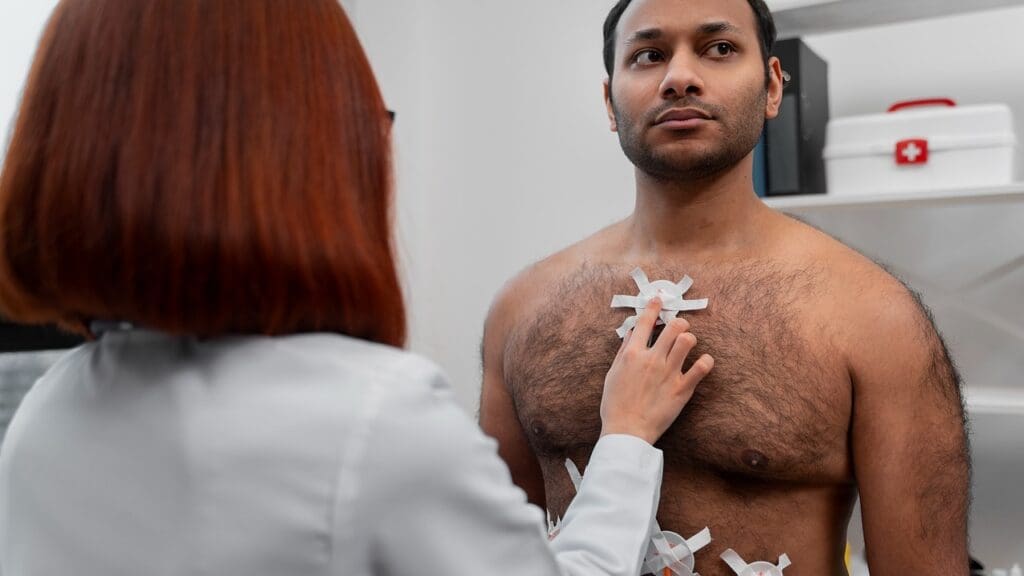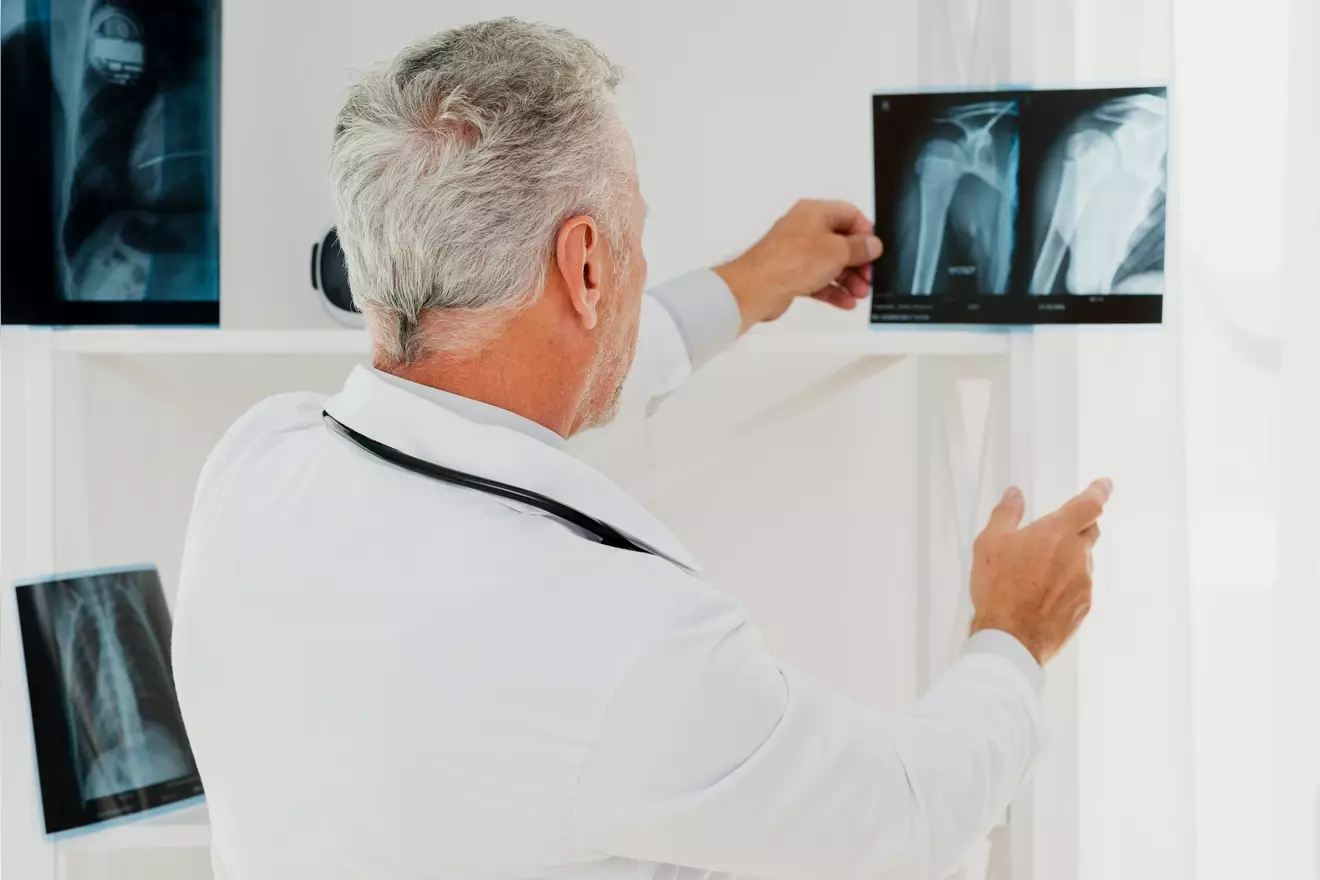Last Updated on November 26, 2025 by Bilal Hasdemir

When you’re diagnosed with skin cancer, knowing your treatment options is key. It’s important to understand the surgical techniques used to treat it. At Liv Hospital, we know how many types of surgery for skin cancer removal there are. This way, you get care tailored to your needs.
Key Takeaways
- Understanding the different surgical techniques for treating skin cancer.
- Overview of the various types of surgery available for skin cancer removal.
- Importance of personalized care in treating skin cancer.
- Comprehensive support for international patients.
- Advanced medical treatments available for skin cancer.
Understanding Skin Cancer and When Surgery Is Necessary
To understand skin cancer, you need to know its types and when surgery is needed. It happens when skin cells grow out of control, often because of too much sun exposure.
Common Types of Skin Cancer
There are three main types of skin cancer: basal cell carcinoma (BCC), squamous cell carcinoma (SCC), and melanoma. BCC and SCC are usually treatable if caught early. But melanoma is more serious and needs quick action.
Signs That Indicate Surgical Intervention
Signs that surgery is needed include new or changing moles, sores that won’t heal, and skin that’s red, swollen, or sore. Finding these early is key to treating them well.
| Type of Skin Cancer | Common Signs | Treatment Approach |
|---|---|---|
| Basal Cell Carcinoma | Shiny bumps or nodules | Surgical excision or Mohs surgery |
| Squamous Cell Carcinoma | Firm, red nodules or flat lesions | Surgical excision or Mohs surgery |
| Melanoma | Changing moles or new pigmented lesions | Surgical excision with wide margins |
The Diagnosis Process Before Skin Cancer Removal Surgery
Getting a correct skin cancer diagnosis is key before starting surgical excision for skin cancer. We go through several important steps. These help us figure out how big the cancer is and how to treat it best.
Biopsy Procedures and Results
The first step is a biopsy. We take a piece of the suspicious skin area. Then, we look at it under a microscope for cancer cells.
There are different biopsies, like shave and punch biopsies. Each one is used based on the size and where the lesion is.
Imaging and Staging
After finding cancer, we might use CT scans or MRI. These tests check if the cancer has spread. Staging tells us how big the cancer is.
This is important for planning the right surgery. It could be for basal cell cancer removal from face or other areas.
Consultation with Surgical Specialists
After we know the cancer’s extent, we talk to surgical experts. We discuss the diagnosis, how big the cancer is, and the best surgery options. This talk is key in getting ready for skin cancer removal surgery.
It makes sure patients know what to expect and are okay with their treatment plan.
By doing a detailed diagnosis, we make sure our patients get the best treatment for their skin cancer.
Mohs Micrographic Surgery: Precision and Effectiveness
Mohs surgery is known for its success in treating skin cancer. It removes cancerous tissue layer by layer. Each layer is checked under a microscope to make sure all cancer is gone.
The Step-by-Step Mohs Procedure
The Mohs procedure is very detailed and has several steps:
- Removing a layer of suspected cancerous tissue
- Examining the tissue under a microscope
- If cancer cells are found, removing another layer and examining it
- Repeating this process until no cancer cells are detected
This careful method makes sure all cancer is removed. It also tries to keep as much healthy tissue as possible.
Ideal Candidates for Mohs Surgery
Mohs surgery is great for:
- Patients with basal-cell carcinoma or squamous cell carcinoma
- Cancers in areas where keeping tissue is important
- Recurrent skin cancers or those with aggressive features
Success Rates and Tissue Preservation Benefits
Mohs surgery has very high cure rates, often over 99% for some skin cancers. It also helps keep more tissue, which means less need for big reconstructive surgeries.
| Skin Cancer Type | Cure Rate with Mohs Surgery | Tissue Preservation Benefit |
|---|---|---|
| Basal-cell carcinoma | 99% | High |
| Squamous cell carcinoma | 97% | Moderate to High |
Using Mohs micrographic surgery, we can give patients a treatment that works well. It also means less scarring and better looks.
Standard Surgical Excision Techniques
Surgical excision is a key method for treating skin cancer. It removes cancerous tissues and some healthy tissue too. This ensures all cancer cells are gone.
The Complete Excision Process
First, we examine the skin cancer to figure out how much tissue to remove. Then, we surgically remove the cancerous area. We make sure to include healthy tissue around it.
Determining Appropriate Surgical Margins
Finding the right surgical margins is key. The margins depend on the cancer type and stage. For example, squamous cell carcinoma excision needs different margins than basal cell excision. Our experts decide on the best margins.
| Cancer Type | Typical Margin | Considerations |
|---|---|---|
| Basal Cell Carcinoma | 2-5 mm | Location and size of the tumor |
| Squamous Cell Carcinoma | 4-6 mm or more | Depth and differentiation of the tumor |
Reconstruction Options After Excision
After removing the cancer, we decide on the best way to fix the wound. We aim to make the area look and work like before. We might use simple stitches, skin grafts, or more complex surgeries.
“The key to successful skin cancer removal lies not just in the excision itself, but also in the reconstruction that follows, ensuring the best possible outcome for the patient.”
We combine precise excision with the right reconstruction to help our patients. This way, we ensure the best results for those with skin cancer.
Curettage and Electrodesiccation for Superficial Cancers
Superficial skin cancers can be treated well with curettage and electrodesiccation. This method combines scraping and cauterization. It’s great for these cancers because it removes bad cells without harming good tissue nearby.
How C&E Removes Cancer Cells
Curettage uses a special tool to scrape away bad tissue. Then, electrodesiccation uses an electric current to kill any left-over cancer cells. This two-step process makes sure all cancer is gone.
Optimal Scenarios for C&E Treatment
C&E works best for shallow basal cell carcinomas and some squamous cell carcinoma in situ. It’s great for the face because it saves tissue. Doctors choose C&E after checking the cancer’s depth and size.
Recovery Timeline and Wound Care
Recovery from C&E is fast, with most wounds healing in weeks. Keeping the wound moist and avoiding picking at scabs helps. Following your doctor’s care instructions is key.
Like any surgery, C&E has risks like infection and scarring. But, when done by experts, it’s safe and works well for superficial skin cancers. “Curettage and electrodesiccation is a valuable tool in our fight against skin cancer,” says it’s a simple yet effective treatment.
Cryosurgery: Freezing Cancer Cells
We use cryosurgery to kill skin cancer cells by freezing them. It’s great for some types of skin cancer and is less invasive.
The Cryotherapy Procedure Explained
Cryosurgery uses liquid nitrogen to freeze and kill cancer cells. It’s fast and done in a clinic.
First, we check the area well. Then, we use a special device to apply liquid nitrogen. The cold kills the cells.
Best Candidates for Cryosurgery
Cryosurgery is best for patients with shallow skin cancers. It’s also good for those who don’t want surgery or prefer less invasive methods.
Post-Treatment Expectations and Healing
After cryosurgery, the area might blister or swell. But, this usually goes away in a few days. We give clear aftercare instructions to help healing and avoid problems.
| Procedure Aspect | Description | Benefits |
|---|---|---|
| Application of Liquid Nitrogen | Direct application to cancerous cells | Precise targeting of cancer cells |
| Treatment Duration | Typically a few minutes | Quick procedure |
| Post-Treatment Effects | Blistering or swelling | Temporary, resolves within days |
Laser Surgery for Early-Stage Skin Cancers
Laser surgery is now a treatment for early-stage skin cancers. It targets cancer cells precisely, keeping the rest of the tissue safe. This method is a cutting-edge solution for patients with early-stage skin cancer, providing effective results.
Types of Lasers Used in Cancer Treatment
Several lasers are used to treat skin cancer, each with its own benefits. The most common include:
- CO2 Lasers: These lasers are great for removing superficial skin cancers. They are known for their precision.
- Nd:YAG Lasers: Neodymium-doped Yttrium Aluminum Garnet lasers treat deeper lesions. They can go deeper into the tissue.
- PDL Lasers: Pulsed Dye Lasers are good for treating certain skin lesions and cancers. They work well because they selectively target hemoglobin.
Cancer Types Most Responsive to Laser Therapy
Laser therapy works best for certain skin cancers, mainly those caught early. Basal cell carcinoma and squamous cell carcinoma in situ are among the most responsive types.
| Cancer Type | Response to Laser Therapy |
|---|---|
| Basal Cell Carcinoma | Highly responsive, even in early stages |
| Squamous Cell Carcinoma in situ | Effective for treating superficial lesions |
| Melanoma | Less commonly treated with laser; typically requires other treatments |
Comparing Laser Surgery to Other Methods
Laser surgery has many benefits over traditional surgery. It causes less scarring, bleeding, and has faster recovery times. But, it’s important to compare it with other options to find the best fit for each patient.
We look at many factors when comparing laser surgery to other treatments. These include the cancer type and stage, the patient’s health, and the cosmetic outcome.
Skin Cancer Removal Surgery: Procedures and Protocols
Skin cancer removal surgery involves many steps. These include preparation, precise techniques, and care after surgery. Knowing what to expect can make you feel more confident about your treatment.
Pre-Operative Preparation
Before surgery, we make sure patients are ready. We have a detailed talk about the procedure, risks, and what to expect. Pre-operative preparation is key for a smooth surgery. We guide patients on how to prepare their skin and manage medications.
Anesthesia Options
The type of anesthesia depends on the skin cancer and the patient’s health. We offer different anesthesia options, like local anesthesia, to keep patients comfortable. Our team will talk about the best option with you during your consultation.
Surgical Facility Settings
Surgeries are done in a clean, modern facility. Our surgical facility settings are safe and comfortable. For more on skin cancer, check out recent market analyses.
Knowing about skin cancer removal surgery helps patients. Our team is dedicated to caring for you from start to finish. We aim for the best results for you.
Basal Cell Carcinoma: Specialized Removal Approaches
Removing basal cell carcinoma needs special care to avoid scarring and recurrence. Basal cell carcinoma (BCC) is the most common skin cancer. Its removal depends on the tumor’s location, size, and depth.
Basal Cell Removal from Facial Areas
On the face, precision is key to keep the look natural and remove all cancer cells. We use Mohs micrographic surgery for its high success rate and less damage to tissue.
BCC Surgery on the Body
BCC on the body needs careful planning, even if it’s not as visible as on the face. Standard excision is common, with possible reconstruction based on the area size.
Recurrence Rates and Follow-Up Care
After removing BCC, follow-up care is vital to watch for recurrence and manage any issues. We stress the need for regular skin checks and sun protection to prevent new cancers.
By customizing the removal method for each case, we get high success rates in treating basal cell carcinoma. This approach also minimizes the impact on appearance and quality of life.
Squamous Cell Carcinoma: Surgical Depth and Considerations
Surgery for squamous cell carcinoma is carefully planned. It depends on the cancer’s stage and risk factors. The depth of the cut is key to success and recovery.
How Deep Do They Cut for Squamous Cell Carcinoma
The depth of the cut for SCC depends on the cancer’s size, location, and spread. Surgeons aim to remove the cancer with healthy skin around it. This ensures all cancer cells are gone. The amount of healthy skin removed varies based on the cancer’s risk.
Key considerations for determining the depth of excision include:
- The thickness of the tumor
- The presence of high-risk features such as poor differentiation or perineural invasion
- The location of the tumor, with areas like the face requiring careful consideration to preserve cosmetic and functional outcomes
High-Risk SCC Features and Treatment Modifications
SCCs with high-risk features need special treatment. These include large size, deep invasion, and certain histological characteristics. Surgeons might use more aggressive methods or add treatments like radiation therapy.
Examples of high-risk SCC features include:
- Poorly differentiated tumors
- Tumors with perineural invasion
- Cancers located in areas known to have a higher risk of recurrence or metastasis
Post-Excision Monitoring for SCC Patients
After surgery, SCC patients need close monitoring. Regular check-ups help catch any problems early. This allows for quick action.
Understanding the depth of surgery and monitoring after it helps patients and doctors. Together, they can achieve the best results in treating squamous cell carcinoma.
Potential Complications and Managing Surgical Risks
Every surgery, including skin cancer removal, has its own risks. It’s important for patients to know these risks to make the best treatment choice.
Common Side Effects After Skin Cancer Surgery
Patients might feel pain, swelling, bruising, and redness after surgery. Effective pain management is key. We use medicines and other methods to reduce pain.
Some might feel numbness or tingling near the surgery area. These feelings usually go away with time.
Infection Prevention and Management
Infection is a risk with any surgery. We take strict steps to prevent it, like using antibiotics when needed.
| Infection Prevention Measures | Description |
|---|---|
| Pre-operative antibiotics | Administering antibiotics before surgery to reduce the risk of infection. |
| Sterile surgical technique | Using sterile equipment and techniques during surgery to prevent contamination. |
| Post-operative wound care | Providing clear instructions on wound care to patients to promote healing and prevent infection. |
Scarring and Cosmetic Considerations
Scarring is a part of skin cancer surgery. But, our skilled surgeons work hard to make scars as small as possible. They aim for the best cosmetic results.
We talk to patients about reconstruction options. This helps them choose what can make the area look better after it heals.
Conclusion: Making Informed Decisions About Skin Cancer Treatment
It’s key to know the different surgical options for skin cancer treatment. This article has covered various skin cancer removal surgeries. We talked about Mohs Micrographic Surgery, Standard Surgical Excision, Curettage and Electrodesiccation, Cryosurgery, and Laser Surgery.
Each surgery has its own benefits and is best for different types and stages of skin cancer. Knowing about each technique helps patients make better choices. They can work with their healthcare providers to find the right treatment.
It’s vital to talk to surgical specialists about the best surgery for your skin cancer. Making good choices means looking at the type and stage of your cancer. This way, patients can get the best results and avoid complications.
References








